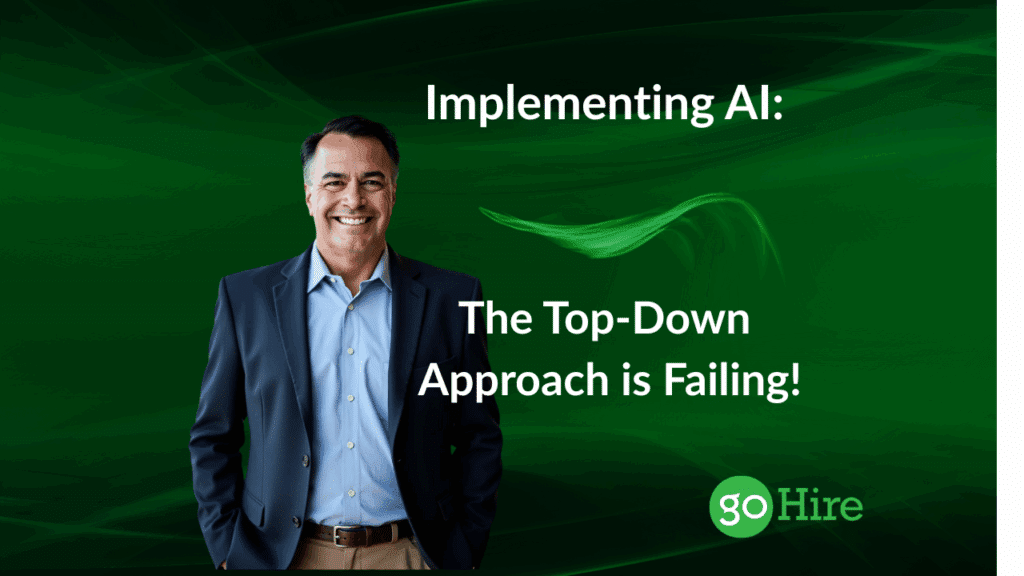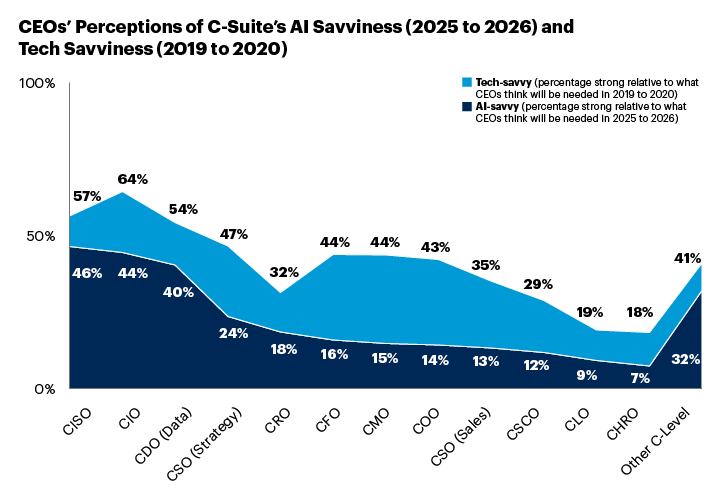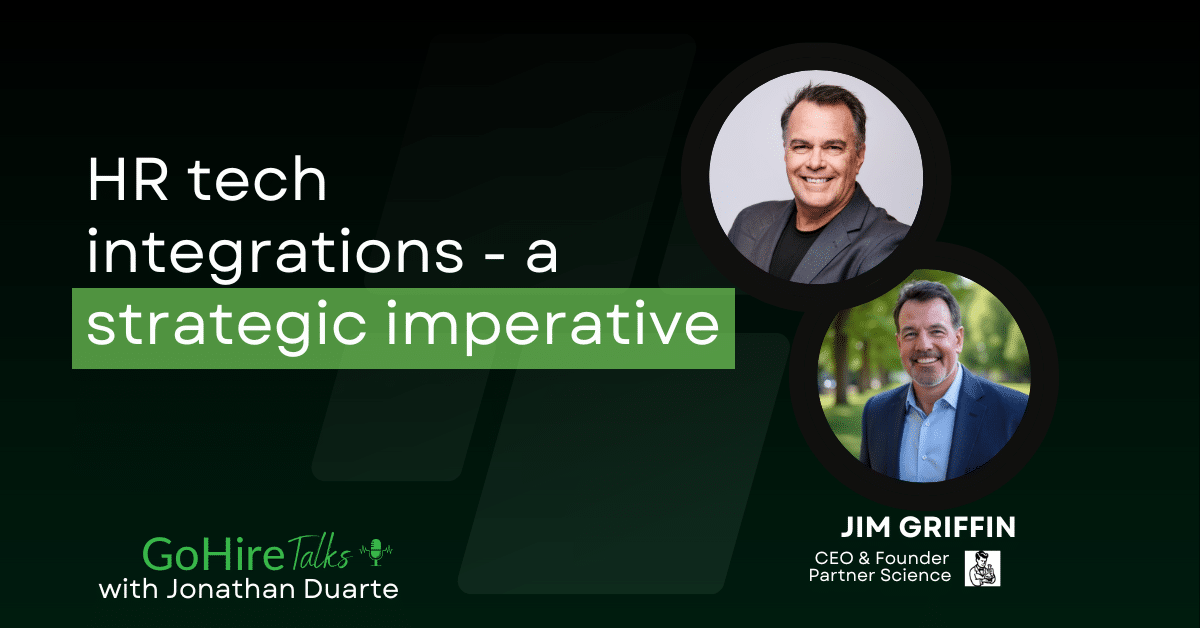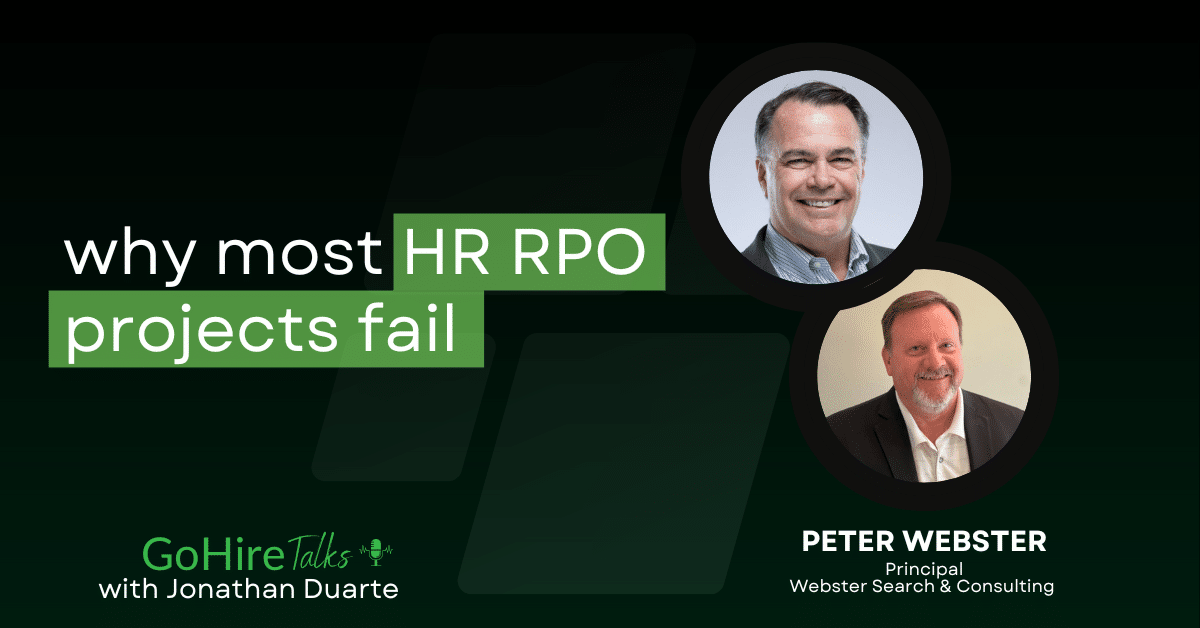
The current enterprise AI wave is more chaotic than transformative, and the cracks are showing.
CEOs are making AI mandates, CISOs are concerned, and the workforce is scared of AI.
Is this really the success we’re expecting to hear on the next earnings calls? I don’t think so… and I think there’s a fix.
AI Implementations Should NOT be run like Top-Down IT Software Installs
Too many leaders are approaching AI like a traditional IT rollout. That’s a mistake.
From the board room and investors point of view, there’s lots of similarities between the expectations of ERP software and AI.
On a daily basis, were new seeing new analyst reports, vendor surveys, and white papers coming out saying saying AI is going to:
- automate and optimize processes
- drive increased revenue
- decrease operating costs (ie. labor costs)
The main theme – AI will affect almost all divisions and departments, from sales and marketing and finance, to product development, manufacturing, and customer support… just like an ERP.
And that could be why the CEO and IT implementation mindset and directive is “Implement it like an ERP”, in a top-down process.
As a former Senior ERP Business Consultant implementing global enterprise solutions for Fortune 500 companies like Dole Foods, Chevron, Lexmark, WL Gore, and Gateway 2000 (remember the cow boxes), I think we need to re-asses that strategy and mindset.
Effective AI Implementations are Bottom-Up, but require Top-Down Leadership!
Top-down software implementation strategies lead by IT, won’t work with AI.
AI is different. And when we talk about Generative AI, it’s not a single software, it’s a technology that, at this stage, relies on individuals to leverage it.
Too many leaders are approaching AI like a implementing a traditional IT rollout.
That’s a mistake!
ERP systems like Oracle, WorkDay, and SAP are centralized and rigid.
- ERP implementations were all-or-nothing go-lives—not iterative pilots
- Most ERP projects copied over old broken workflows rather than redesigning for efficiency
- Implementations were lead by IT.
- The focus was on data centralization, not workflow optimization
AI requires the opposite:
- Iteration and experimentation
- User-owned workflows
- Embedded decision-making at the frontlines
- Leadership from HR
AI is about augmenting humans in real-time. That’s not something IT can deploy top-down.
It has to be co-created with the people doing the work, ie a Workforce Transformation.
In a top-down approach, we’d expect to hear earnings call statements and internal memos like:
- “We are implementing Workday because it will do X, Y, Z.”
- “We have a team ready.”
- “We have a governance and training plan.”
That’s not what’s happening with AI implementations. Instead, it’s Chaos!
We’re hearing statements like what Shopify’’s CEO, Tobi Lütkewrote to his employees,
Everyone at Shopify – no exceptions – should be using AI daily, and if you want to expand your team, you must first show why AI isn’t up to the task.
While only a single sentence from a single CEO, I think it’s a snapshot of the mindset of most CEOs when it comes to implementing AI.
Notice the words used… “you” and “your”, and no mention of “we”.
In a recent Forbes article, and survey from Lucidworks, 83% of CISOs expressed major or extreme concern about AI progress—an eight-fold increase in concern compared to two years ago.
We wouldn’t be hearing this kind of concern, at this level, if the “top-down” implementation of a known software project was working.
In Adecco’s recent Global C-Suite Survey of 2,000 C-suite leaders across 13 countries and 17 industries, we see survey results like this:
- Only 10% of companies say they’re fully prepared for AI disruption.
- 53% expect employees to teach themselves AI tools, without any formal support
- 66% of C-suite leaders say they plan to hire AI talent externally, rather than upskill their workforce
These survey results are pretty concerning because they contradict what we’re really experiencing inside the business, from business leaders outside of the C-suite.
AI Is Already a Bottom-Up Movement!
Across departments, AI implementations are already happening—but it’s not coming from leadership.
- Bradon Summat, The CPO of Zapier is testing AI-powered 1-on-1 meetings. Audio gets transcribed, action items extracted, insights flagged, and managers + employees walk away with clear deliverables. (see the HR Heretics podcast below, where Kelli Dragovich and Nolan Church two very successful Silicon Valley CHROs interview Brandon.)
- Ops teams are using AI to reduce meeting time and summarize updates
- Recruiters are testing GPT copilots to screen resumes, schedule interviews, and personalize outreach
These aren’t official rollouts. They’re bottom-up experiments, led by internally motivated subject matter experts (SMEs) who know the workflows, tools, data sources, and business logic.
And they’re doing it without training, support, or governance, in many cases.
Why is Zapier getting results, while 90% of companies say they’re not prepared for AI Disruption?
- Zapier has a clear executive vision of AI and Automation.
- They’re leveraging the expertise of their existing highly-qualified subject matter experts.
- They’re giving the team the tools, training, and internal incentives to learn and experiment with AI.
- They’re supporting individual pilots and experiments to optimize and automate internal processes and tasks.
- Brandon, The CPO is highly-engaged in their AI Workforce Transformation.
The Rise of AI-Enabled, Cross-Functional Roles
There are two main tracks of AI implementation right now:
- Pre-built AI agents: Vendor-driven tools with embedded automation (e.g., GoHire for HR and Recruiting, AgentForce in Salesforce, ADP bots for payroll)
- Internal AI automations: Homegrown workflows built by SMEs using tools like ChatGPT, Claude, Perplexity, Zapier, Make, n8n.
In both tracks, the SMEs are the real builders:
- They know the exceptions to the rules
- They understand data structure, logic, and context
- They determine what “good” and “great” outcomes actually look like
New roles are emerging:
- AI Automation Manager – sits across departments and builds and maintains AI and automations for the team
- Workflow Designer – collaborates with different teams, like HR, Marketing, IT, and Ops
These roles may belong to Marketing, HR, or Ops—but they’re not traditional IT, and they aren’t programming roles.
We’re moving from siloed job functions to cross-functional process optimization teams, where the most valuable AI contributions won’t come from outside hires.
They’ll come from people who already understand the business—and who are now empowered with the tools to reshape it.
How to Get Ahead (Before You Fall Further Behind)
If you’re a CHRO, CIO, or CEO watching AI unfold with no plan, here’s what your company needs now:
- Form an AI Governance Team: Cross-functional, empowered, and focused on business/user value and risk
- Track Internal Pilots: Create a shared internal knowledge base for what’s working, where, and why
- Fund SME-led Experiments: Stop looking for external experts—your best bets are already on payroll
- Deliver Role-Based Training: Forget vague AI seminars. Focus on enabling frontline practitioners
- Build a Responsible AI Framework: Companies with frameworks are 36% more likely to upskill workers (Adecco)
- Define Clear KPIs: Shift from adoption metrics to outcomes—time savings, quality, decision speed, and employee experience
- Break Silos: AI wins won’t come from isolated teams. Create cross-functional feedback loops and shared resources
Implement a Bottom-up AI Workforce Transformation led by the CHRO!
- According to a Gartner CEO survey, CHROs are the least-trusted execs to lead AI strategy – yet they’re the ones responsible for the output of the workforce and workforce transformation.
- As Charlene Li, a mentioned in her recent article, “Employees aren’t afraid of AI—they’re afraid they’ll be left behind.”
- Low Employee sentiment won’t work in a bottom-up implementation, where the workforce is the true driver of AI.

A Call to Action: Why I’m Sharing This
I’ve been building and implementing business process automation, ERP systems, Recruiting and HR Tech and Conversational AI solutions for global enterprises for over 30 years, since I first learned about Taylorism as a student at UCLA.
Effectively implementing AI, doesn’t follow any of those top-down software implementation methodologies we were taught and learned. AI is different.
Getting short-term and long-term business results from AI requires a Workforce Transformation, because the results will come from your existing Workforce who can build, maintain, and update processes and automations as your business changes.
If you’re a CEO, CIO, CISO, or CHRO, and this resonates with you. Let’s chat.
No one wants to over promise and under deliver. Setting up the right AI Implementation Strategy is what’s required to win.


 06 October, 2025
06 October, 2025


